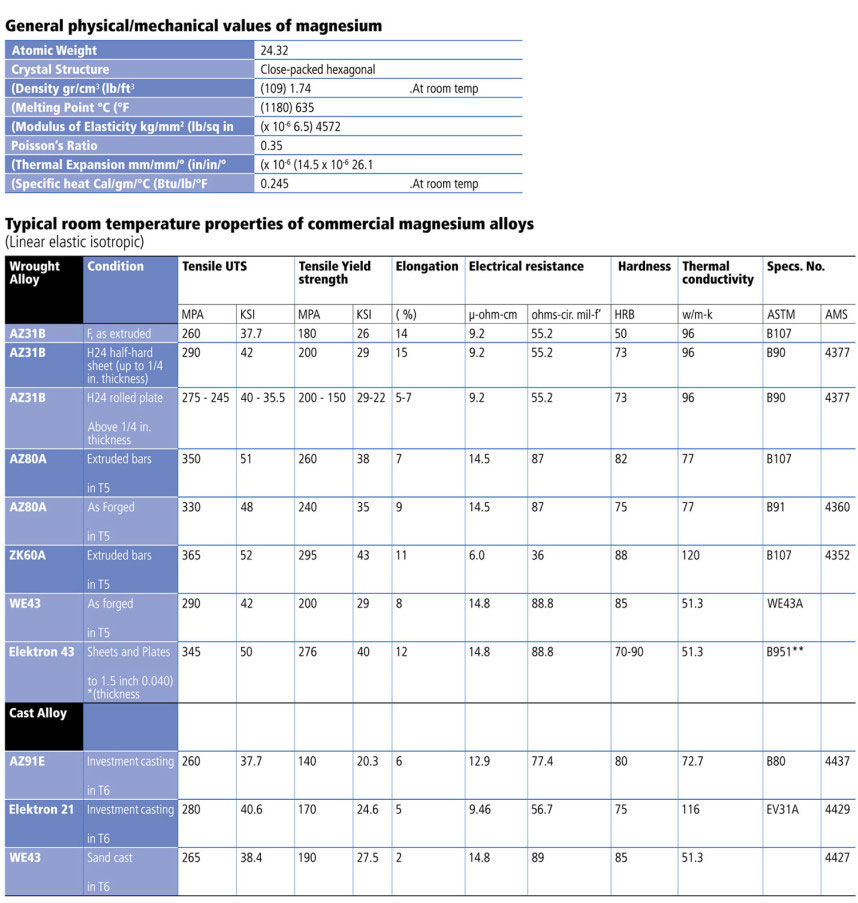ABOUT MAGNESIUM

Magnesium | Magnesium Alloys | Processing
Magnesium is the lightest of all structural metals (density of 1.74 g/cm³ 0.063lb/in³). As such, it forms the basis for commercial alloys that have found successful use in a wide variety of applications. The principal ores of magnesium are dolomite, magnesite and carnalite. Magnesium also exists as chloride in seawater, underground natural brines and salt deposits.
For engineering applications, magnesium is usually alloyed with elements which include aluminum, manganese, zinc, zirconium and some RE. The resultant alloys have high strength-to-weight ratios.
Magnesium can be cast and fabricated by practically every method known to the metal worker. High Pressure Die Casting is the most common process in use, especially in the automotive field, where high capacities compensate for the high tooling and NRE costs.
Sand cast technique is more popular in aero systems, especially gearboxes and turbo engine peripheral structures.
Magnesium is rolled (from slabs) into sheets and plates and can be extruded into rods, bars, tubing and shaped profiles.
Mg sheets can be formed by means of deep drawing, superplastic forming (SPF-usually via hydro/gas controlled pressure), stamping, shear spinning and conventional/pad bending.
Die-forging of magnesium pre-extruded bars, solid DC slabs or rolled plates, is commonly used in racing car/motorbike wheels as well as aerospace components which require relatively high mechanical performance and homogeneous structure.
The use of die-forging is most common for medium quantities, provides cost saving, through the cutback of machining work, and the increase of material utilization. Die-forging design should consider the material flow for optimum texture orientation through critical stress areas. Magnesium investment casting (lost wax technique) is used as an alternative manufacturing process for low/medium quantities of moderate strength thin wall enclosures which include undercuts and complicated geometrical shapes.
Joining: Magnesium parts can be joined by any of the common methods. Arc, resistance laser beam and friction welding, adhesive bonding and mechanical riveting are in daily production use.
Magnesium alloys possess relatively high thermal and electrical conductivities, very good energy absorption characteristics and are non-magnetic. Magnesium alloys present no toxicity hazard.
Protection: since the early 90s, due to strong motivation of aerospace groups to adapt protection systems according to the existing aluminum alloy procedure standards, there has been huge progress in the field of surface treatment of magnesium alloys. It includes original chrome free electrochemical anodic processes, as well as conversion solutions, conductive coatings, primer adhesive treatments and sealing systems.



